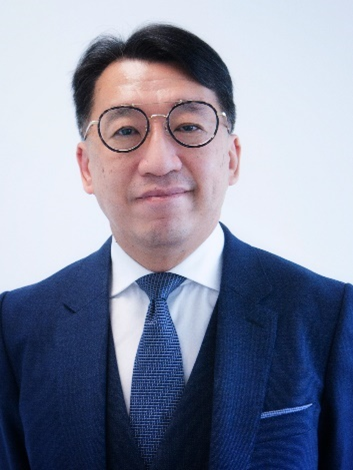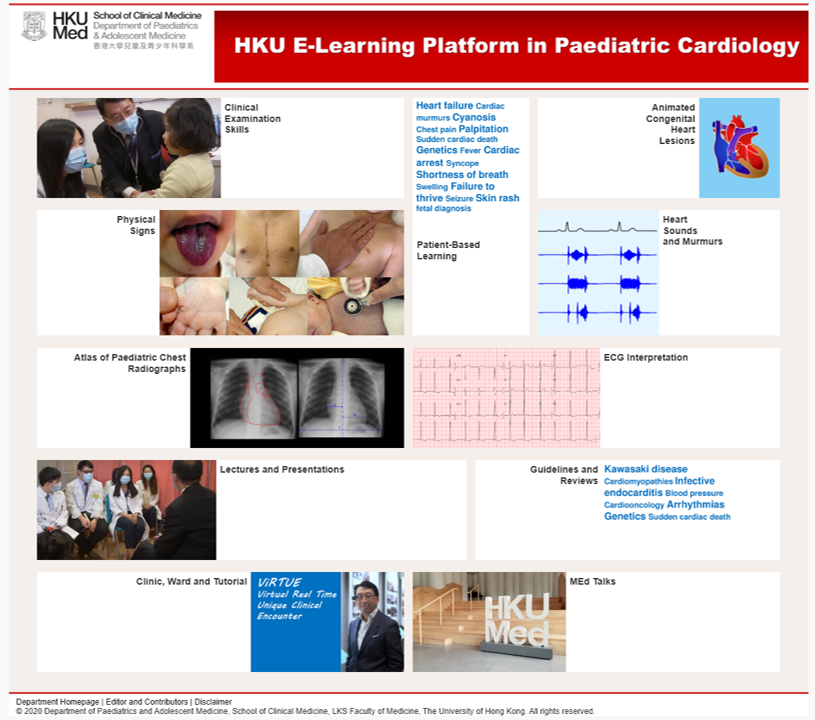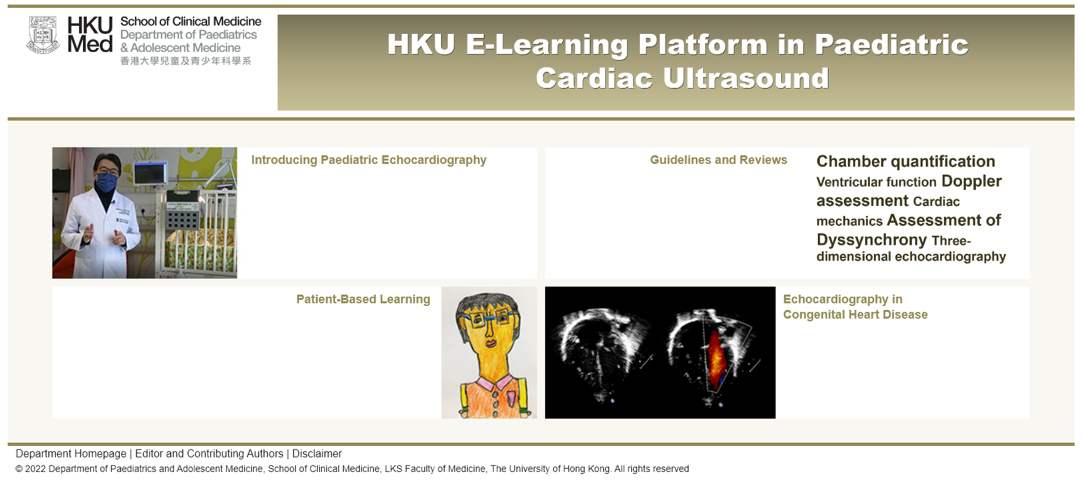Professor Yiu-fai Cheung (張耀輝)
MBBS(HK), MD(HK), MRCP(UK), MRCPCH(UK), FHKCPaed, FHKAM(Paediatrics), FRCPCH(UK), FRCP(Edin)

Chairperson
Clinical Professor
Bryan Lin Professor in Paediatric Cardiology
Department of Paediatrics and Adolescent Medicine,
School of Clinical Medicine,
The University of Hong Kong
Specialty
Paediatric Cardiology
Awards
Sir Patrick Manson Gold Medal (2004)
Faculty Teaching Medal (2007)
| Contact | Email: Tel: Fax: |
(852) 3513 6015 (852) 3512 7598 Department of Paediatrics & Adolescent Medicine Room B10, Doctors’ Office, 9/F, Tower B Hong Kong Children’s Hospital, 1 Shing Cheong Road, Kowloon Bay, Kowloon |
Research ID
Research

Research areas
Paediatric cardiology and adult congenital heart disease are the major areas of Professor Cheung's research. The scope of research encompasses three domains: (i) paediatric and adult congenital heart disease, (ii) acquired heart disease in children, and (iii) vascular function in health and disease in the young.
His research work focuses on the followings:
| l | Novel echocardiographic imaging technologies |
| l | Paediatric and adult congenital heart disease: cardiac mechanics, biomarkers of cardiac dysfunction, and long-term outcomes |
| l | Arterial dysfunction in the young |
| l | Kawasaki disease |
| l | Cardio-oncology |
| l | Iron overload cardiomyopathy and vasculopathy |
Competitive General Research Fund (Research Grants Council of Hong Kong), Health and Medical Research Fund (Food and Health Bureau, HKSAR) and Innovation and Technology Support Programme (Innovation and Technology Commission, HKSAR) - funded projects
| l | Effect of iron-loading on arterial distensibility and endothelial function in patients with beta thalassaemia major |
| l | Impact of iron overload on left ventricular torsion in patients with beta-thalassaemia major |
| l | Right and left ventricular mechanical dyssynchrony in iron loaded patients with beta-thalassaemia major |
| l | Mechanics of ventricular-ventricular interaction in patients after tetralogy of Fallot repair: analysis by three-dimensional speckle tracking echocardiography |
| l | Circulating microRNAs and myocardial damage in paediatric cancer patients receiving anthracyline therapy |
| l | Circulating transforming growth factor-β and aortic dilation in patients with repaired congenital heart disease |
| l | Remote ischaemic preconditioning in paediatric cancer patients receiving anthracycline therapy |
| l | Patient-specific human induced pluripotent stem cell based multi-organ model for validation of genetic risks for anthracycline cardiotoxicity in childhood cancer patients - a pilot study |
| l | Characterization of a novel heart-liver-gut axis in congenital heart disease: from clinical phenome to gut microbiome |
| l | Resting and dynamic right ventricular-pulmonary arterial coupling in childhood cancer survivors |
| l | Establishing a molecular encyclopedia for stem cell and regenerative medicine: Heart |
| l | A unique patient-specific tissue engineering and drug discovery platform of precision medicine for dystrophin – deficient cardiomyopathy of Southern Chinese |
Selected publications
Novel echocardiographic imaging technologies
| l | Li VW, Cheuk DK, Cheng FW, Yang JY, Yau JP, Ho KK, Li CK, Li RC, Yuen HL, Ling AS, Chan GC, Cheung YF. Myocardial stiffness as assessed by diastolic wall strain in adult survivors of childhood leukaemias with preserved left ventricular ejection fraction. Eur Heart J Cardiovasc Imaging 2017;18:451-458. |
| l | To AH, Li VW, Ng MY, Cheung YF. Quantification of pulmonary regurgitation by vector flow mapping in congenital heart patients after repair of right ventricular outflow obstruction: A preliminary study. J Am Soc Echocardiogr 2017;30:984-991. |
| l | Yu HK, Yu W, Cheuk DK, Wong SJ, Chan CF, Cheung YF. New three-dimensional speckle-tracking echocardiography identities global impairment of left ventricular mechanics with a high sensitivity in childhood cancer survivors. J Am Soc Echocardiogr 2013;26:846-852. |
| l | Cheung YF. The role of 3D wall motion tracking in heart failure. Nat Rev Cardiol 2012;9:644-657. |
Cardiac and vascular mechanics
| l | Cheung YF, Chow PC, So EKF, Chan KW. Circulating transforming growth factor-β and aortic dilation in patients with repaired congenital heart disease. Sci Rep 2019;9:162. |
| l | Li VWY, Cheung YF. Arterial-left ventricular-left atrial coupling late after repair of aortic coarctation and interruption. Eur Heart J Cardiovasc Imaging 2015;16:771-780. |
| l | Li SN, Wong SJ, Cheung YF. Novel area strain based on three-dimensional wall motion analysis for assessment of global left ventricular performance after repair of tetralogy of Fallot. J Am Soc Echocardiogr 2011;24:819-825. |
| l | Cheung YF, Chan CF, Ha SY. Arterial stiffness and endothelial function in patients with beta-thalassaemia major. Circulation 2002;106;2561-2566. |
| l | Cheung YF, Taylor MJ, Fisk NM, Redington AN, Gardiner HM. Fetal origins of reduced arterial distensibility in the donor twin in twin-twin transfusion syndrome. Lancet 2000;355:1157-1158. |
Cardio-Oncology
| l | Li VWY, So EKF, Wong WHS, Cheung YF. Myocardial deformation imaging by speckle tracking echocardiography for assessment of cardiotoxicity in children during and after chemotherapy: a systematic review and meta-analysis. J Am Soc Echocardiogr 2022;35:629-656. |
| l | Tong X, Li VW, Liu AP, So EK, Chan Q, Ho KK, Yau JP, Cheuk DK, Cheung YF, Ng MY. Cardiac magnetic resonance T1 mapping in adolescent and young adult survivors of childhood cancers. Circ Cardiovasc Imaging 2019;12:e008453. |
| l | Li VWY, Liu APY, Wong WHS, Ho KKH, Yau JPW, Cheuk DKL, Cheung YF. Left and right ventricular systolic and diastolic functional reserves are impaired in anthracycline-treated long-term survivors of childhood cancers. J Am Soc Echocardiogr 2019;32:277-285. |
| l | Yu W, Li SN, Chan GC, Ha SY, Wong SJ, Cheung YF. Transmural strain and rotation gradient in survivors of childhood cancers. Eur Heart J Cardiovasc Imaging 2013;14:175-182. |
| l | Cheung YF, Hong WJ, Chan GCF, Wong SJ, Ha SY. Left ventricular myocardial deformation and mechanical dyssynchrony in children with normal ventricular shortening fraction after anthracycline therapy. Heart 2010;96:1137-1141. |
Kawasaki disease
| l | Khor CC, Davila S, Breunis WB, Lee YC, Shimizu C, Wright VJ, Yeung RS, Tan DE, Sim KS, Wang JJ, Wong TY, Pang J, Mitchell P, Cimaz R, Dahdah N, Cheung YF, Huang GY, Yang W, Park IS, Lee JK, Wu JY, Levin M, Burns JC, Burgner D, Kuijpers TW, Hibberd ML; Hong Kong–Shanghai Kawasaki Disease Genetics Consortium, Lau YL, Zhang J, Ma XJ, Liu F, Wu L; Korean Kawasaki Disease Genetics Consortium, Yoo JJ, Hong SJ, Kim KJ , Kim JJ, Park YM, Hong YM, Sohn S, Jang GY, Ha KS, Nam HK, Byeon JH, Yun SW, Han MK, Lee KY, Hwang JY, Rhim JW, Song MS, Lee HD, Kim DS, Lee JM; Taiwan Kawasaki Disease Genetics Consortium, Chang JS, Tsai FJ, Liang CD, Chen MR, Chi H, Chiu NC, Huang FY, Chang LY, Huang LM, Kuo HC, Huang KP, Lee ML, Hwang B, Huang YC, Lee PC; International Kawasaki Disease Genetics Consortium, Odam M, Christiansen FT, Witt C, Goldwater P, Curtis N, Palasanthiran P, Ziegler J, Nissen M, Nourse C, Kuipers IM, Ottenkamp JJ, Geissler J, Biezeveld M, Tacke C, Filippini L, Brogan P, Klein N, Shah V, Dillon M, Booy R, Shingadia D, Bose A, Mukasa T, Tulloh R, Michie C; US Kawasaki Disease Genetics Consortium, Newburger JW, Baker AL, Rowley AH, Shulman ST, Mason W, Takahashi M, Melish ME, Tremoulet AH; Blue Mountains Eye Study, Viswanathan A, Rochtchina E, Attia J, Scott R, Holliday E, Harrap S. Genome-wide association study identifies FCGR2A as a susceptibility locus for Kawasaki disease. Nature Genet 2011;43:1241-1246. |
| l | Cheung YF, Huang GY, Chen SB, Liu XQ , Xi L, Liang XC, Huang MR, Chen S, Huang LS, Liu XQ, Chan KW, Lau YL. Inflammatory gene polymorphisms and susceptibility to Kawasaki disease and its arterial sequelae. Pediatrics 2008;122:608-614. |
| l | Cheung YF, Ho MHK, Tam SCF, Yung TC. Increased high sensitivity C reactive protein concentrations and increased arterial stiffness in children with a history of Kawasaki disease. Heart 2004;90:1281-1285. |
| l | Cheung YF, Yung TC, Tam SC, Ho MH, Chau AKT. Novel and traditional cardiovascular risk factors in children after Kawasaki disease: Implications for premature atherosclerosis. J Am Coll Cardiol 2004;43:120-124. |
Teaching and Learning
Teaching innovations
In 2020, Professor Cheung developed a multifaceted ‘E-Learning Platform in Paediatric Cardiology’, the first of its kind, for medical students and paediatric residents to ‘Learn at their Own Pace, Anytime and Anywhere’. This E-learning platform features i) illustrated sections on clinical examination skills, interpretation of clinical signs, and cardiac investigations, ii) audio tracks of heart sounds and murmurs, iii) animations of congenital heart disease, iv) videoed lectures on core topics of paediatric cardiology, and v) inclusion of updated guidelines and reviews on topical issues in paediatric cardiology. Additionally, patient-based scenarios with questions and podcast feedback are included to enhance the clinical reasoning and problem-solving skills of learners. Furthermore, he designed a novel ‘ViRTUE (Virtual Real Time Unique clinical Encounter) Teaching and Learning Platform’ for delivery of clinical teachings of patients in the ward and clinics to remotely located students amid the COVID-19 pandemic. In 2022, he developed the “HKU E-Learning Platform in Paediatric Cardiac Ultrasound”, the new online learning platforms covers the major topics on application of cardiac ultrasound in children. It provides medical students with an opportunity to understand the principles and application of ultrasound to diagnose paediatric heart conditions.

E-Learning Platform in Paediatric Cardiology

HKU E-Learning Platform in Paediatric Cardiac Ultrasound
Teaching and supervisory commitment
At the Faculty level, Professor Cheung was Chairman of the Board of Studies of Master of Medical Sciences programme from 2010-2016. At the Departmental level, he is a member of the Education Committee. Externally, he is a member of the Examination Committee of the Hong Kong College of Paediatricians, Education and Accreditation Committee of The Medical Council of Hong Kong, and Examination Sub-committee of The Licentiate Committee of the Medical Council of Hong Kong. He serves as local examiner of the HKU and CUHK MBBS examinations, MRCPCH clinical examination, and Licensing Examination of The Medical Council of Hong Kong.
He has been invited as the external examiner of the Joint MMed (Paediatric)/MRCPCH Clinical Examination of National University of Singapore in 2014, the Final Professional Examination for the degree of MBBS of Yong Loo Lin School of Medicine of National University of Singapore in 2017, the Final Examination for the degree of MBBS of University Malaya in Kuala Lumpur in 2018, and the Paediatric Medicine Exit Examination of Paediatric Medicine Residency Advisory Committee and Exit Exam Committee in Singapore in 2019, 2020 and 2022.
Professor YF Cheung is responsible for the paediatric and paediatric cardiology teaching of medical students, paediatric residents, and cardiology fellows. He has supervised 8 PhD students, 3 MPhil students, 13 MMedSc students, and 12 clinical and research fellows from Mainland China. Learning-oriented teaching, which emphasizes on the need of students and trainees to become active independent learners, is central to his philosophy. He pioneered the use of multimedia tools in the teaching of paediatric cardiology and has authored 2 books, 1 multimedia CDROM, and 10 book chapters. He was awarded the Teaching development grant in 2003, Leung Kau Kui and Run Run Shaw Research and Teaching Endowment Funds in 2004, In recognition of his work in medical education, he was awarded the Faculty Teaching Medal in 2007.
Books and book chapters
Clinical Service
Professor YF Cheung provides specialist clinical service for children and adults with congenital and children with acquired heart diseases. Together with other paediatric cardiologists, at the Hong Kong Children’s Hospital and Queen Mary Hospital, they provide diagnostic evaluation, postoperative care, and transcatheter interventions for patients ranging from neonates with critical heart conditions to grown-up congenital heart patients.